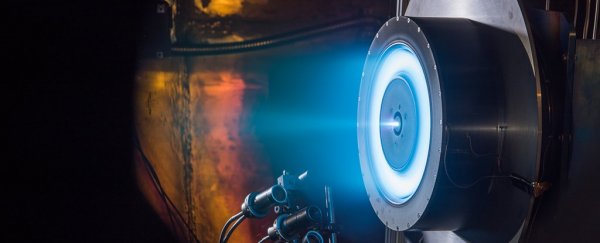Scientific discovery doesn't get anywhere without collaboration. Even Einstein knew that one genius locked in a room can't solve all the mysteries of the Universe. So when NASA does a patent dump, and allows scientists and engineers from all over the world to get a look at its incredible research, it's an awesome thing.
This week, NASA released 56 of its patented technologies into the public domain, including a super-cheap method for manufacturing carbon nanotubes and a stronger type of aerogel, new propulsion methods and engine technologies for rockets, and devices that could one day help humans live and breathe in space.
"By making these technologies available in the public domain, we are helping foster a new era of entrepreneurship that will again place America at the forefront of high-tech manufacturing and economic competitiveness," said Daniel Lockney, NASA's Technology Transfer program executive. "By releasing this collection into the public domain, we are encouraging entrepreneurs to explore new ways to commercialise NASA technologies."
If you're ready to dive right in, you can access the full searchable database of expired NASA patents here.
Not every expired patent NASA owns is automatically released to the public - figuring out which ones should be kept under wraps involves a lengthy review process that basically assesses which technologies will require some serious know-how if you want to make a tonne of money out of their research.
This means that no, you're not going to dig up a gem, tweak it a little, patent it yourself, and become a billionaire (*closes tab regretfully, keeps working on creepy toilet companion*).
"The innovations included in this transfer were selected by NASA officials using a rigorous review process, during which decision-makers looked for technologies that offer the potential for high unit values but are less likely to be licensed by outside companies because of low demand for resulting products (e.g. spacecraft), or the technology still requires significant development before it is marketable," NASA explained in a statement.
In other words, you've gotta earn it, son!
So what's actually in this buzzing repository of science goodness? NASA lists a few examples:
- Technologies designed to mitigate the dangerous gases created as humans live and work in space
- Inventions related to rocket nozzles, injection systems, and propellants that might help launch a new generation of commercial spacecraft (SpaceX, get hype)
- Methods for controlling airflow around vehicles in hypersonic flight
Other examples that Doug Bolton from The Independent found include a new way to make a tougher type of aerogel - the lightest (and arguably weirdest) material in the world, and a technique to make the carbon nanotube manufacturing process 20 times cheaper than it already is.
What are carbon nanotubes? Well, they're basically just a really, really tiny form of carbon - around 3,500 times thinner than the diameter of a human hair - that can be used in everything from creating the blackest material in the world, the toughest fibre in the world, and the strongest material in the world. Not bad, nanotubes. Not bad.
While most of the technologies were developed with space exploration in mind - because it's NASA, after all - what's going to be really interesting is seeing how researchers adapt them for Earth-based purposes.
"These technologies were developed to advance NASA missions, but may have non-aerospace applications and be used by commercial space ventures and other companies free of charge, eliminating the time, expense and paperwork often associated with licensing intellectual property," says NASA.
So go on and have a poke around the database to see what's available.
If the best thing that comes out of this release is that SpaceX builds the most efficient rocket engine ever and we're all happy and eating strawberries on Mars in the not-too-distant future, we'd better save a postcard or two for NASA's Technology Transfer program.
